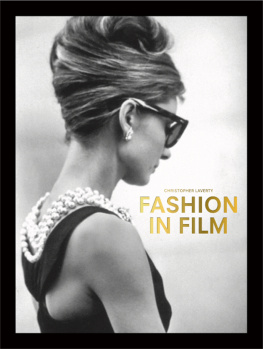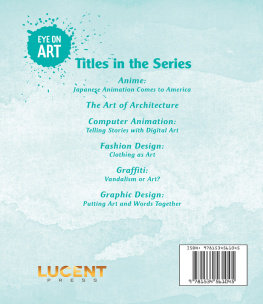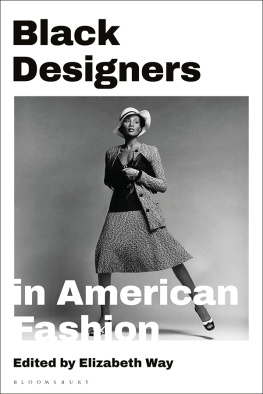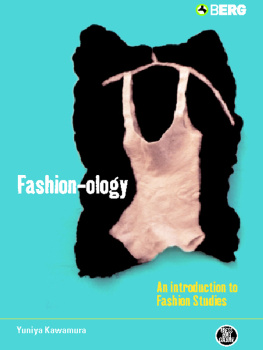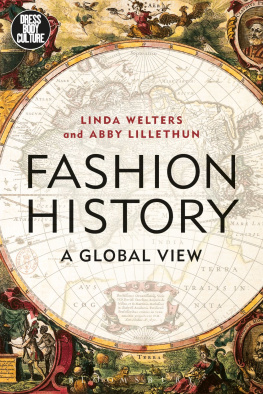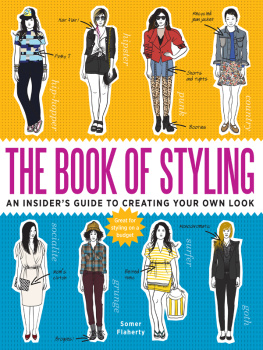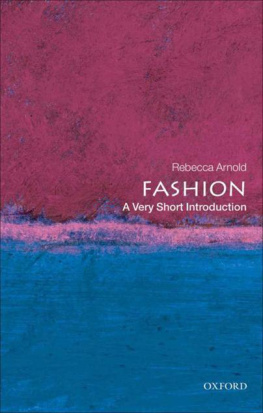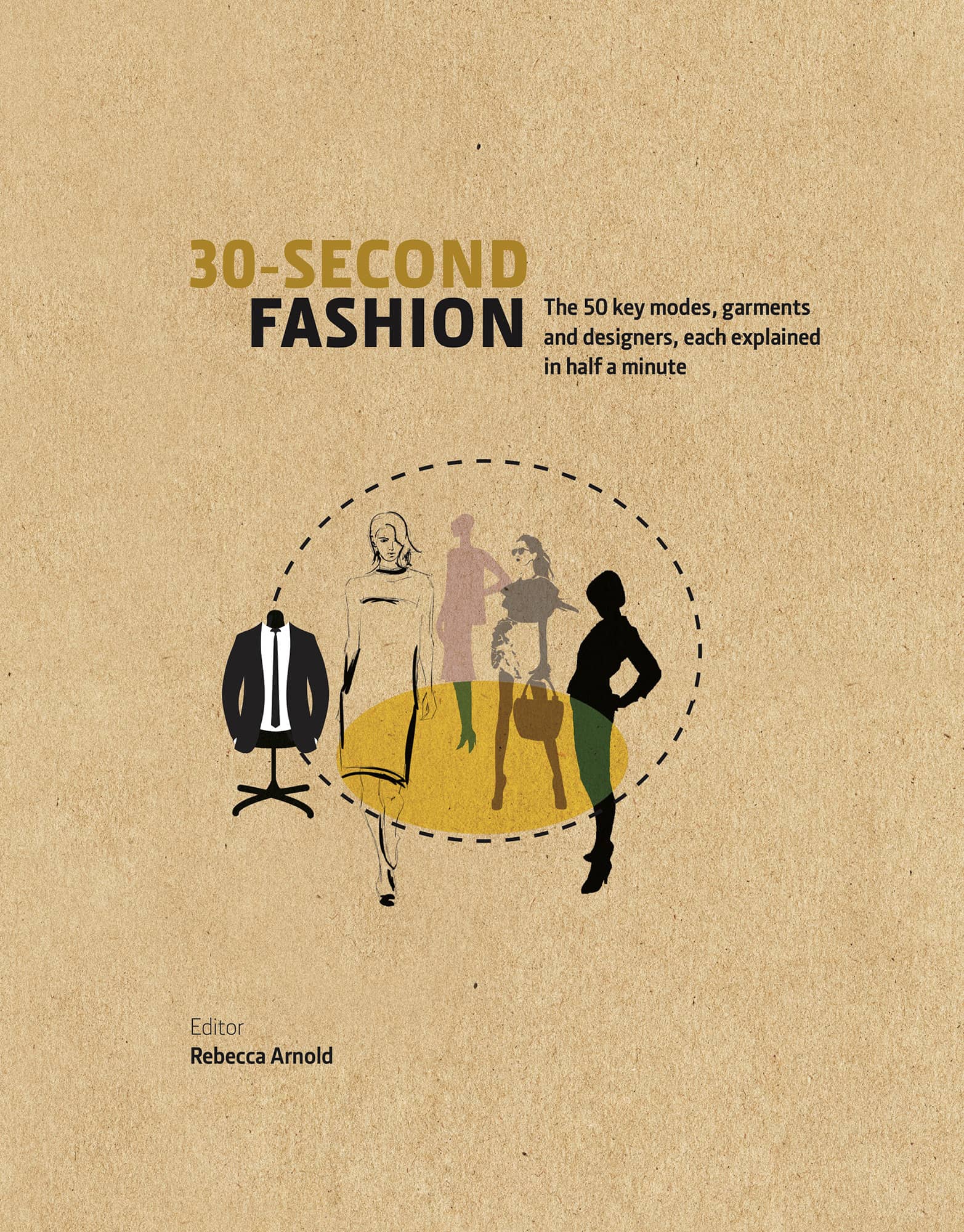30-SECOND
FASHION
The 50 key modes, garments and designers, each explained in half a minute
Editor
Rebecca Arnold
Contributors
Emma McClendon
Katerina Pantelides
Julia Rea
Rebecca Straub
Alison Toplis
Olga Vainshtein
Illustrations
Nicky Ackland-Snow

First published in the UK in 2016 by
Ivy Press
Ovest House
58 West Street
Brighton BN1 2RA
United Kingdom
www.quartoknows.com

Copyright The Ivy Press Limited 2016
All rights reserved. No part of this publication may be reproduced or transmitted in any form by any means, electronic or mechanical, including photocopying, recording or by any information storage-and-retrieval system, without written permission from the copyright holder.
British Library Cataloguing-in-Publication Data
A catalogue record for this book is available from the British Library.
Digital edition: 978-1-78240-439-2
Hardcover edition: 978-1-78240-390-6
This book was conceived, designed and produced by
Ivy Press
Publisher Susan Kelly
Creative Director Michael Whitehead
Editorial Director Tom Kitch
Art Director Wayne Blades
Commissioning Editor Sophie Collins
Senior Project Editor Caroline Earle
Designer Ginny Zeal
Picture Researcher Katie Greenwood
Glossaries Text Alison Toplis
INTRODUCTION
Rebecca Arnold
What makes fashion, rather than just clothes? Is it the way a garment is designed? Or the way its sold? Or maybe its the way its worn? All of these aspects play a part, but the main thing defining fashion is its time-based nature. Built around seasonal shows, the word fashion implies a relationship to change and movement. Fashion shapes the type of clothes, accessories, grooming and even the ways we style ourselves. After all, fashions second meaning is to shape, to mould, to create something. We fashion ourselves, and in turn, fashion makes us.
How this book works
We begin by looking at some of the iconic Designers whose work has defined the silhouette through the decades, from industry pioneers such as Paul Poiret, Madeleine Vionnet and Coco Chanel to modern-day trendsetters including Alexander McQueen, Vivienne Westwood and Marc Jacobs. We then look at the Themes & Inspirations behind fashion designers work, such as the choice of textiles and the influence of film, sport and social trends.
But how is fashion created? And where do we find out about it? In Fashion Cities & Centres, we look at fashion as an international industry. Although the main designers collections are shown twice a year in the four most established cities Paris, London, New York and Milan the past 20 years have seen the growth of new locations and fashion centres for example, Tokyo, So Paulo and Sydney. As countries such as India and China emerge as sites of both fashion design and media, rather than just production, the industrys global outlook has become ever more important. Fashion cities and countries have also become associated with particular styles; for example, London is often seen as the home of edgy fashions. The Fashion Calendar then looks in detail at how the industry is organized around annual fashion weeks at these cities and the roles of the various people who arrange and sell the fashion.

From court designers of the 18th century to the present day, the fashion silhouette has evolved to reflect the influences of the times.
From Couture to High Street examines how designers and manufacturers, including Alexander Wang and Prada, produce fashion for different levels of the market from different types of clothing, such as evening wear or sportswear, to different types of wearers, including business women and teenagers. In each case, specific designers and brands create clothes allied to their own outlook, and in connection with their client base.
Designers and brands then rely on a whole chain of different professionals to enable them to promote and sell their work. The Media, from magazines such as Vogue to blogs including Susanna Laus Style Bubble, plays a key role in disseminating not just images of new collections and reviews of fashion shows, but also creating a mood and emotional resonance that connects fashion to consumers on a deeper level.
In the late nineteenth and early twentieth centuries, as the fashion industry became increasingly professionalized, new subsidiary industries evolved to support its growth from advertising to public relations. In the century and a half since then, wider changes such as the emergence of international travel and digital media have spread fashions further afield, and given more democratic access to fashionable dress.
It is important to remember that it not just the fashion industry that generates new styles Street Style, the subject of the final chapter, has played a significant role, especially in the way younger people dress. From from punk to Japanese Lolitas, it demonstrates the importance of self-fashioning, as well as keeping up with the latest fashions seen on the runway and the red carpet.
Throughout this book youll find profiles of some of the key names from the fashion industry, including Miuccia Prada, Anna Wintour, Paul Smith and Bill Cunningham. Each entry is broken down into three parts the 3-second sketch encapsulates the subject, the 30-second catwalk, delivers the in-depth treatment and the 3-minute detailing provides more information about the topic at a glance.
A global industry the only constant with fashion is that it changes, reinterpreting the past and embracing the future.

DESIGNERS
DESIGNERS
GLOSSARY
bias cut Fabric cut on the cross, diagonally across the direction of the weave, which gives the material fluidity and the ability to cling to the body, achieving a close fit.
boucl wool A woollen fabric with an uneven textured surface of knots and curls, made famous by Chanel with her use of it for her skirt suits.
corset An undergarment that embraces the chest and manipulates the natural waist level, usually boned with steel ribs or, historically, whalebone, to give a structured and supported look to the bodice. Often fastened with lacing and/or hooks and eyes.


